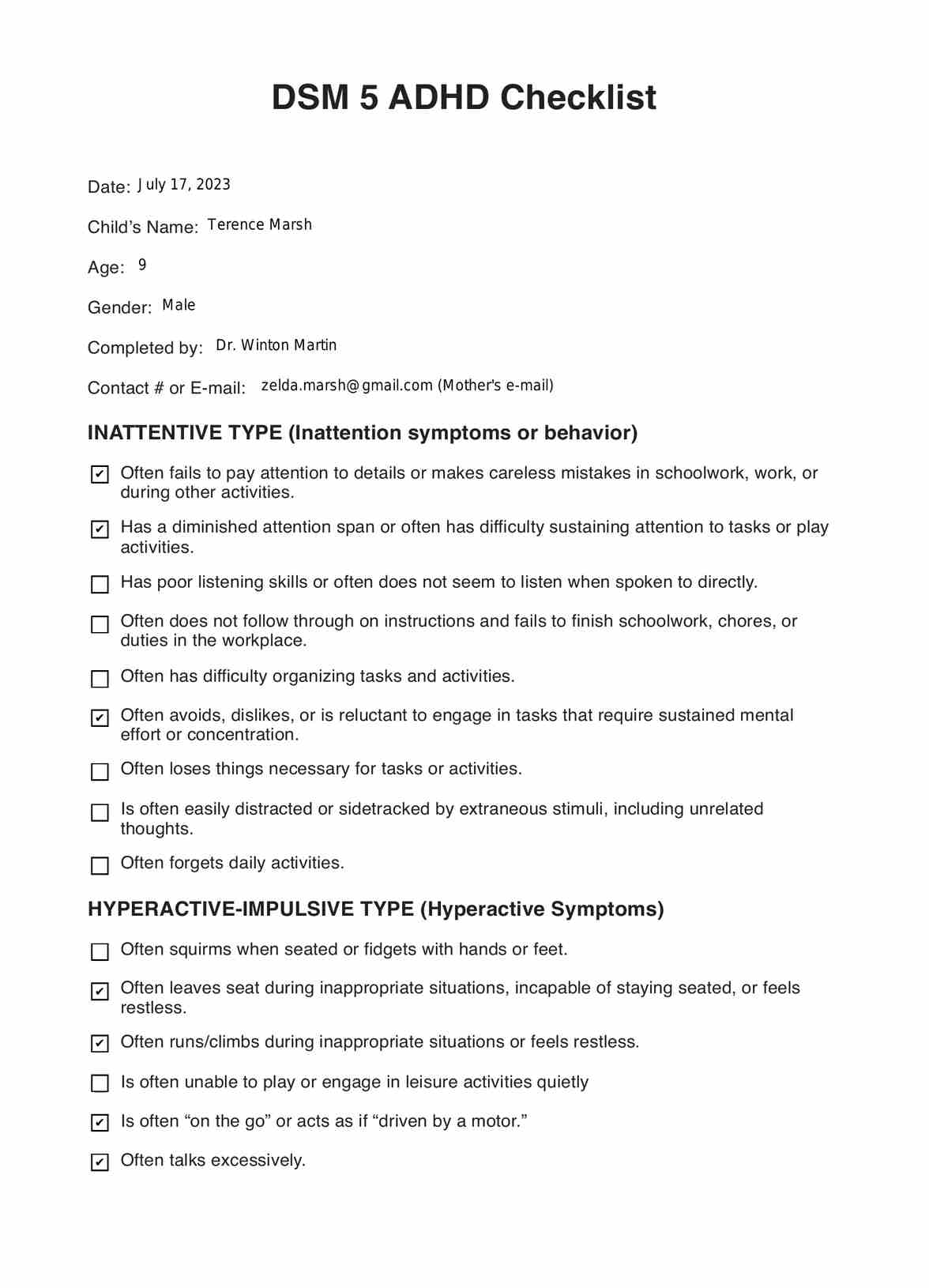The DSM-5 Checklist, a key tool in the Diagnostic and Statistical Manual published by the American Psychiatric Association, helps in accurately diagnosing Attention Deficit Hyperactivity Disorder (ADHD). It provides detailed criteria for ADHD symptoms, distinguishing them from symptoms of mood disorders, anxiety disorders, psychotic disorders, personality disorders, and dissociative disorders. This differentiation is crucial for appropriate ADHD treatment and avoiding misdiagnosis.

DSM 5 ADHD Checklist
Check if your patient has ADHD with the help of this DSM-5 ADHD checklist. Click here for a copy of our template and more information on the document.
DSM 5 ADHD Checklist Template
Commonly asked questions
ADHD, according to the DSM-5, is a neurodevelopmental disorder wherein someone exhibits a pattern of over 5-6 symptoms of the inattention and/or hyperactivity-The checklist identifies specific ADHD symptoms like difficulty remaining focused, difficulty managing sequential tasks, and challenges in activities requiring sustained mental effort. It notes the persistent pattern of inattention and hyperactivity-impulsivity, impacting social or occupational functioning and leading to functional impairment.
Yes, the DSM-5 recognizes that ADHD symptoms can manifest differently at various developmental levels. While younger children might exhibit more hyperactive-impulsive symptoms, adults often display more inattentive symptoms. The criteria for ADHD diagnosis, therefore, are adjusted for age, with a different number of symptoms required for a diagnosis in children versus adults.
EHR and practice management software
Get started for free
*No credit card required
Free
$0/usd
Unlimited clients
Telehealth
1GB of storage
Client portal text
Automated billing and online payments











